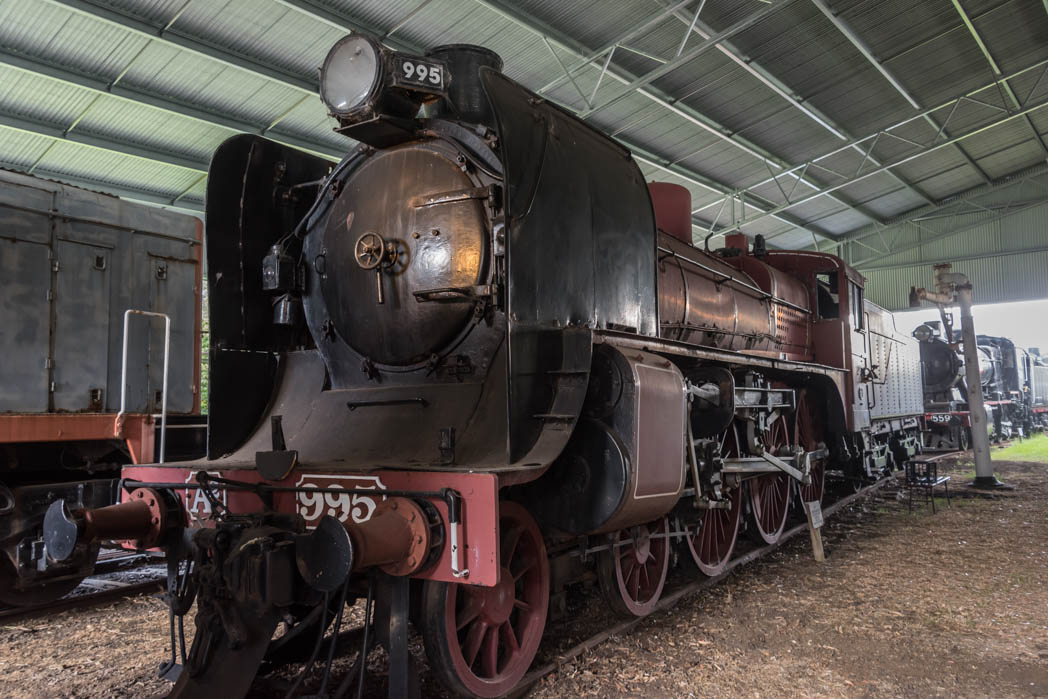
Constructed at Newport Workshops in May 1916 and retired in 1963.
A2 995 displays the Walscheart\’s valve gear fitted to the last 60 members of the class. Exhibit A2 884 shows the earlier Stephenson\’s Valve Gear fitted to the other 125 class members.
This locomotive was converted from coal to oil burning in 1946.
A2 995 has the distinction of running the last broad-gauge Spirit of Progress on April 16 1962. Following this date the service moved to the newly commissioned standard guage and was hauled by an S or B class diesel locomotive.
From their introduction in 1907 to their withdrawal in 1963 the A2 class were a versatile staple of the Victorian Railways, with 185 class members running everything from The Overland to Serviceton, the Spirit of Progress, and goods trains across the state. By the late 1950s the class were progressively removed from service with the introduction of the B and R classes.
Constructed by Beyer Peacock of England in 1911, to the DD design of the Victorian Railways. It is similar to exhibit D3635, but with a smaller boiler.
D2604 was sold to Australian Paper Manufacturers in 1956, and was used as a shunter at the Morwell paper mill until the early 1960s.
APM converted it to oil firing, using a tender from a D3 locomotive tender on an underframe from a withdrawn A2 locomotive tender.
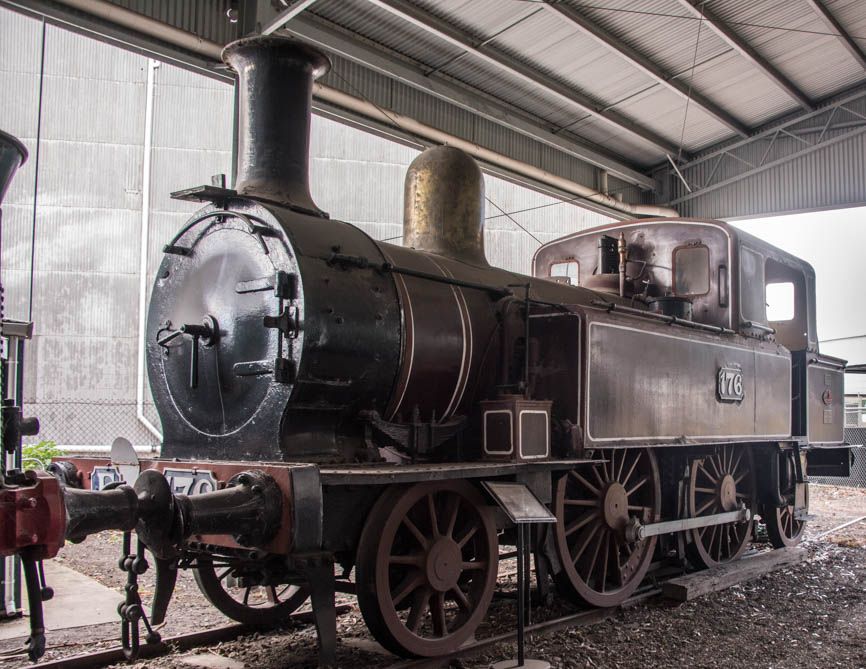
Built in 1876 by Phoenix Foundry, Ballarat. Originally built as a tender locomotive, then converted circa 1911 to a tank locomotive. Known as motors, these locomotives would pull a single passenger carriage on services such as Burnley-Darling, Camberwell-Asburton-Deepdene, Heidelberg-Eltham, Essendon-Broadmeadows, Ballarat-Buninyong and Ballarat-Ballan. F176 was sold to HV McKay, Sunshine in 1920 and was used as resident shunting engine until 1961.
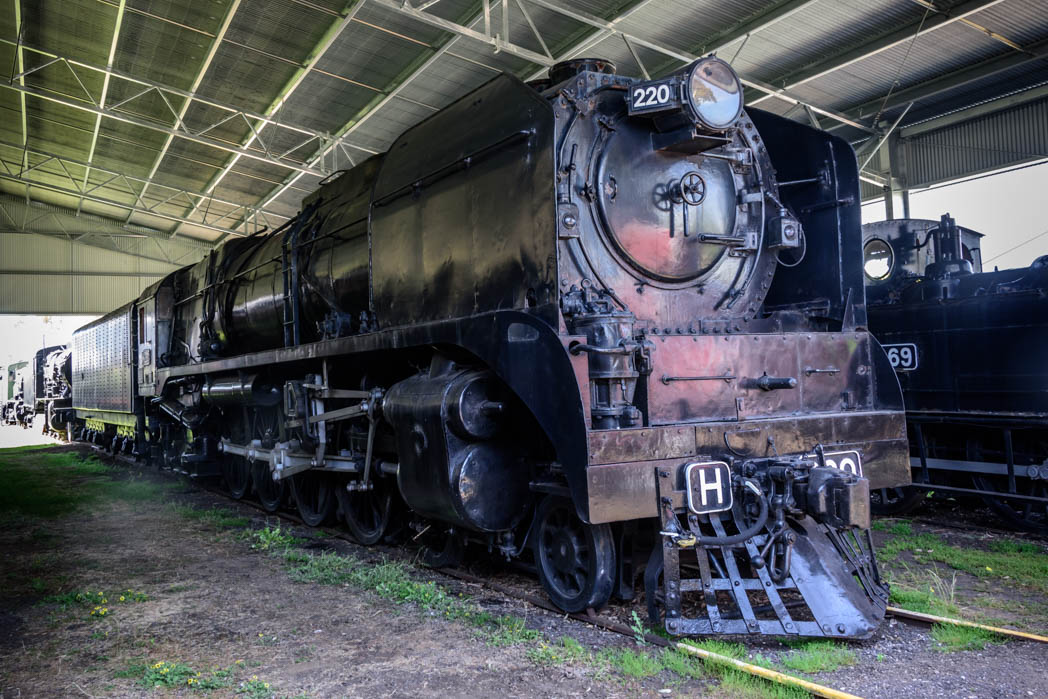
Constructed at Newport Workshops in 1941 and retired in 1956. The largest engine constructed by the Victorian Railways, and believed to be the largest non-articulated locomotive in the Southern Hemisphere.
3 of this class were to be built to run the Overland to Adelaide without double heading A2 class locomotives, but due to wartime requirements and weight restrictions on the Parwan River bridge only 1 was constructed and spent its life on the North-East line. The only 3 turntables in Victoria that could accomodate it without splitting the engine and tender were at North Melbourne, Albury and Ararat.
H220 would occasionally fill in on the Spirit of Progress when an S class steam locomotive was not available, but mostly ran goods trains between Melbourne and Albury, and occasionally Tocumwal.
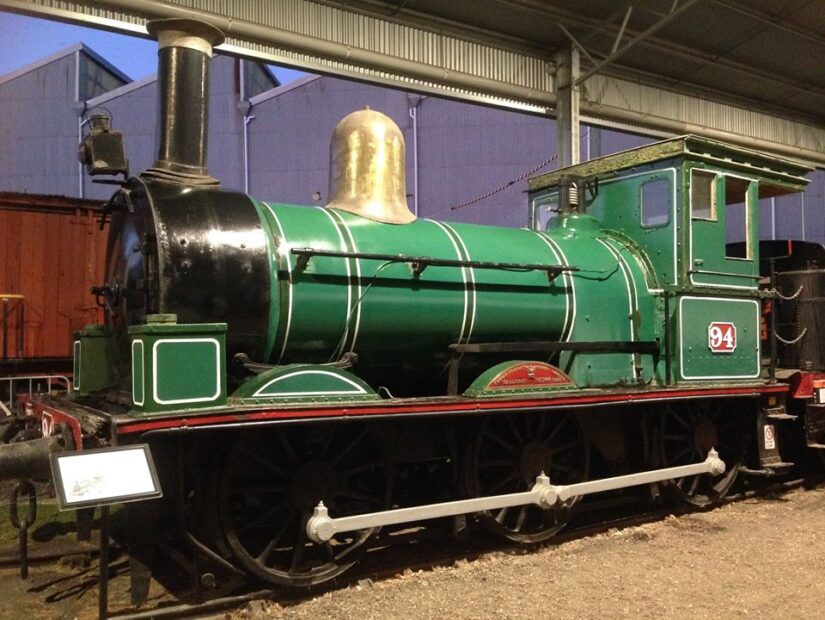
Built in 1884 By Phoenix Foundry, Ballarat. The tender is believed to be a unique survivor of the much earlier W class locomotives, which had been scrapped by the 1920s. T94 became a shunter at the Newport Powerstation and the middle pair of driving wheels had the flanges removed to navigate around tight corners. It was retired on the 13th June 1952.
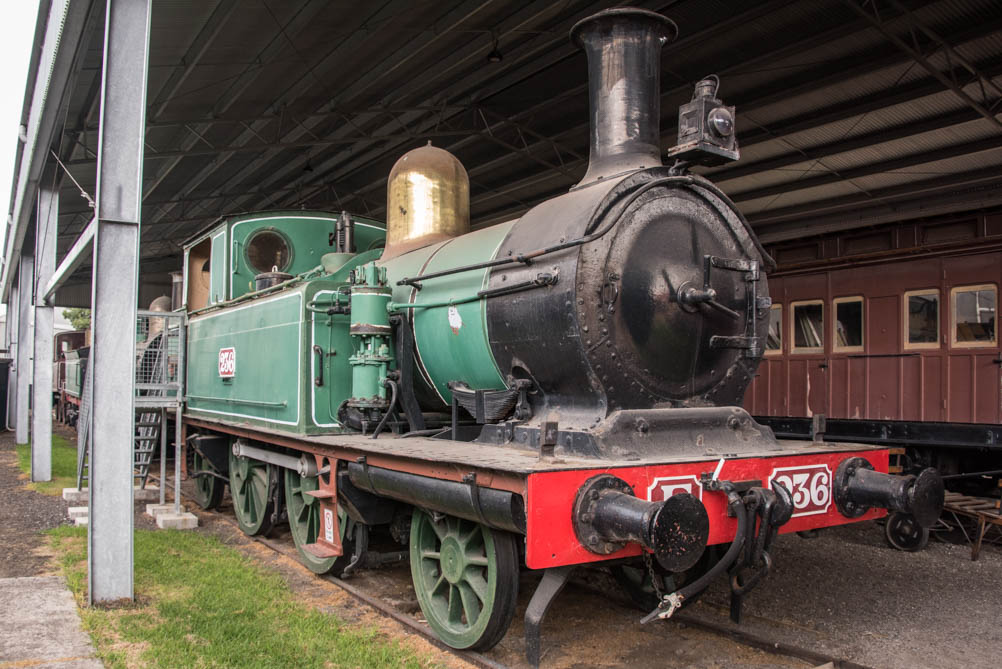
Built in 1893 by David Munro, South Melbourne. Used as a suburban passenger engine until electrification of the network. Used as a shunter at Newport from 1926 until retirement in 1953.

Built in 1929 at Newport Workshops. Named Gerald A. Dee in preservation after the VR driver who secured its survival and proposed the creation of a railway museum. Designed as a heavey freight locomotive, built with a large tender to run Melborne – Bendigo without refuelling. Retired in 1961 after 741,609 miles (1,186,574.4km)





